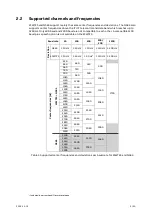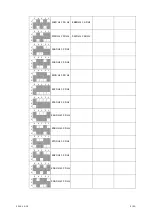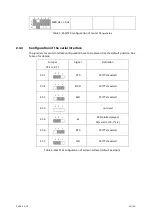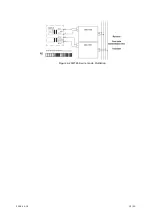
2019-12-19
3
/
20
1
Introduction
This document describes the connection of a rack-type NSK5 modem to a RTU560 rack-type
23WT25 or EDS500 DIN-rail 500FSD20 serial analog modem. Although the configuration is
different 23WT25 and 500FSD20 support the same baud rates and frequencies (channels).
The common compatible transmission modes of the 23WT25 in relation to the NSK5 modem
as well as the configuration that is required for these modes is described.
Description of the 500FSD20 configuration is available on request.
1.1
Motivation
Operators of networks in the energy grid rely on serial transmission of data over powerlines
to supervise and monitor telecontrol equipment. The interconnection of different communi-
cation devices is a key element in maintaining operation of business and investment.
1.2
Modulation
23WT25 and 500FSD20 as well as NSK5 work on the principle of frequency shift keying (FSK),
a modulation scheme highly immune to interference and noise.
The principle of FSK is the assignment of a characteristic frequency to a data bit to be trans-
mitted. A logic one (MARK) is assigned to frequency f
L
while a logic zero (SPACE) is assigned
to a higher frequency f
U
. The frequency f
C
= (f
U
+ f
L
)/2 in the middle of the two characteristic
frequencies is called the center frequency. The deviation f
d
= (f
U
- f
L
)/2 is the difference be-
tween a characteristic frequency and the center frequency. The International Telecommunica-
tion Union (ITU) has published several standards based on FSK by its Telecommunication
Standardization Sector (ITU-T).
These standards comprise R.35 for 50 baud communication, R.37 for 100 baud, R.38A and
R.38B for 200 baud and V.23 for 1200 baud. 23WT25 and NSK5 deliver more possibilities than
these mentioned. Refer to section 2.2 for more details.


















